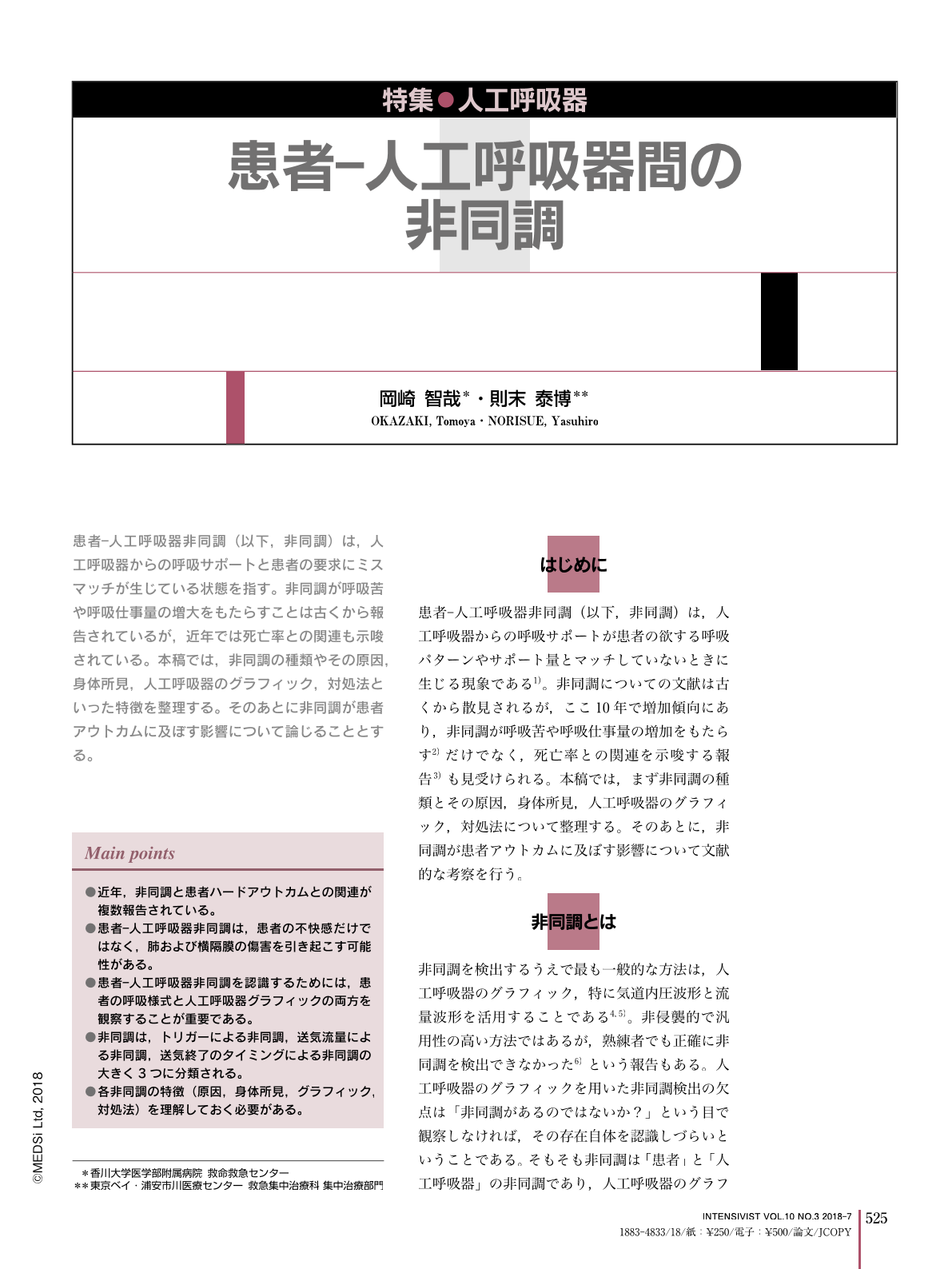Japanese
English
- 有料閲覧
- Abstract 文献概要
- 1ページ目 Look Inside
- 参考文献 Reference
患者-人工呼吸器非同調(以下,非同調)は,人工呼吸器からの呼吸サポートと患者の要求にミスマッチが生じている状態を指す。非同調が呼吸苦や呼吸仕事量の増大をもたらすことは古くから報告されているが,近年では死亡率との関連も示唆されている。本稿では,非同調の種類やその原因,身体所見,人工呼吸器のグラフィック,対処法といった特徴を整理する。そのあとに非同調が患者アウトカムに及ぼす影響について論じることとする。
Main points
●近年,非同調と患者ハードアウトカムとの関連が複数報告されている。
●患者-人工呼吸器非同調は,患者の不快感だけではなく,肺および横隔膜の傷害を引き起こす可能性がある。
●患者-人工呼吸器非同調を認識するためには,患者の呼吸様式と人工呼吸器グラフィックの両方を観察することが重要である。
●非同調は,トリガーによる非同調,送気流量による非同調,送気終了のタイミングによる非同調の大きく3つに分類される。
●各非同調の特徴(原因,身体所見,グラフィック,対処法)を理解しておく必要がある。
Patient-ventilator asynchrony is defined as a mismatch between mechanical respiratory support and patient demands. Patient-ventilator asynchrony is categorized into trigger asynchrony (missed trigger, double trigger, auto trigger, and reversed trigger), flow asynchrony (sagging [flow starvation]), and cycling asynchrony (premature termination [premature cycling], and delayed termination [delayed cycling]). Although examination of ventilator waveforms is a non-invasive and useful technique for the evaluation of asynchrony, even expert physicians may occasionally fail to identify this phenomenon. Previous studies showed that patient-ventilator asynchrony may cause dyspnea and increase the work of breathing. In recent studies, an association between patient-ventilator asynchrony and clinical outcomes including prolonged mechanical ventilation, prolonged hospital stay, and mortality has been reported. Therefore, the characteristics of individual asynchronies should be properly recognized and promptly treated. Physical examination may play an important role in recognizing asynchrony. While adjusting ventilator settings is the primary means to resolve asynchrony, we should bear in mind that the goal is not to treat the asynchrony itself, but to protect the lung through appropriate treatment. A judicious approach to patient-ventilator asynchrony based on careful consideration of the underlying cause behind the respiratory failure and its time course is also needed.

Copyright © 2018, MEDICAL SCIENCES INTERNATIONAL, LTD. All rights reserved.


